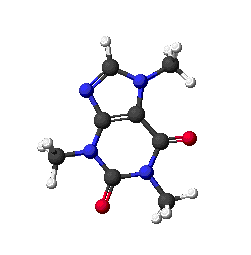
Chemistry
Chapter 4: 1-3

Homework
Stoichimetry
Chapter 4: 1-3 Homework
- Reading Preparation
- WebLecture
- Study Activity
- Preparation work for chat
- Online Quiz
- Lab Instructions
Reading Preparation
Textbook assignment: Read Kotz and Triechel, Chemistry and Chemical Reactivity Chapter 4 Sections 1 to 3.
Study Notes
4.1 Stoichiometry — Mass Relationships in Chemical Reactions. This is the nuts and bolts of chemistry. If you have problems understanding this section or any of the examples, be sure that you get them straightened out as soon as possible. We will spend a lot of effort going from molecules to masses and back....because chemists must measure masses and then calculate the number of molecules involved. There is just no easy way to count molecules. Even when it seems overkill, follow the steps outlined here for every problem. When you run into un-obvious problems, the process can help you figure out what you need to know.
4.2 Limiting Reactants. You've already been doing this kind of calculation for the previous section, where you are given one of the reactants' mass or mole level and asked to find out something about the rest of the reaction amounts. Now you want to determine for a particular situation in which you know the amounts of both reactants, which reactant limits the reaction and determines the final amount of the products.
4.3 Percent Yield. According to the laws of entropy, nothing is 100% efficient when it involves the conversion of energy. So chemical reactions rarely go to completion; some of the reactants never react. There are a lot of factors involved (solution concentration, purity of the species, temperature amonght them). The only way to figure actual yield is to do the experiment multiple times. The ratio of actual/perfect is expressed as a percentage. Figuring out ways to increase yield is a large part of the work of industrial chemists.
| Moles from Masses | |
|---|---|
| Masses from Moles | |
| Percent Yield |
Web Lecture
Read the following weblecture before chat: Stoichiometry
Study Activity
Videos for Chapter 4: Chemical Equations
Review the Videos at Thinkwell Video Lessons under STOICHIOMETRY.
- The Mole: Introducing Conversions of Masses, Moles and Number of Particles
- Solving Problems involving Mass/Mole Relationships: Finding Limiting Reagents
- Solving Problems involving Mass/Mole Relationships: Theoretical Yield and Percent Yield.
- [LAB related]: Under ATOMS, MOLECULES, and IONS: Atomic Structure - CIA Demonstration: Flame Colors
Use the Reactants, Products, and Leftovers simulation below to gain a better understanding of stoichiometry and limiting reactants.
- Use the Sandwiches exercise to build the "target" sandwich in the header. When do you have leftovers? Can you create the right number of sandwiches from your ingredients store so that you don't have leftovers?
- Use the "Molecules" exercise to build water molecules, ammonia, and burn methane. Can you balance these reactions?
- Take the challenge and see whether you can
Chat Preparation Activities
- Essay question: The Moodle forum for the session will assign a specific study question for you to prepare for chat. You need to read this question and post your answer before chat starts for this session.
- Mastery Exercise: The Moodle Mastery exercise for the chapter will contain sections related to our chat topic. Try to complete these before the chat starts, so that you can ask questions.
- Play the game and see whether you can generate the products and leftovers shown for each set of reactions. Can you make it to the expert level 3?
Chapter Quiz
- There is no chapter quiz YET.
Lab Work
LAB #2 GUIDED INQUIRY -- Phase I
Working with your teacher and teammates, design a lab to observe and classify several processes as physical change, chemical change, and ambiguous change based on macroscopic observations using flame tests and qualitative analysis techniques to detect the presence of specific chemicals in known samples, then apply these techniques to identify the anions and cations present in an unknown sample.
References:
- AP2009 14 Separation and qualitative analysis of cations and anions
- APGIE Investigation 9 Physical and Chemical Changes: Can the Individual Components of Quick Ache Relief Be Used to Resolve Consumer Complaints?
- IGHCE Lab 19.1-2 Use Flame Tests and Borax Beads to Discriminate Metal Ions
- IGHCE Lab 19.3 Qualitative Analysis of Inorganic Anions, Cations, and Bone
- (Alternative lab) Flame Tests
© 2005 - 2025 This course is offered through Scholars Online, a non-profit organization supporting classical Christian education through online courses. Permission to copy course content (lessons and labs) for personal study is granted to students currently or formerly enrolled in the course through Scholars Online. Reproduction for any other purpose, without the express written consent of the author, is prohibited.